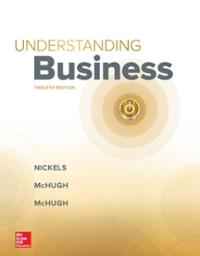Answered step by step
Verified Expert Solution
Question
1 Approved Answer
is supply? Question 1 options: A) The total quantity of goods produced but not sold. B) The maximum possible quantity that producers could make available.
is supply? Question 1 options: A) The total quantity of goods produced but not sold. B) The maximum possible quantity that producers could make available. C) The quantity made available by a typical producer. D) The quantities that producers are willing and able to sell per period of time at various prices. Question 2 (1 point) What is the equilibrium price? Question 2 options: A) The price at which the quantity demanded equals the quantity supplied. B) The price at which everyone is able to buy the quantities they desire. C) The price at which there is no surplus, but there may be a shortage. D) The price that both buyers and sellers agree is fair. E) The price at which there is no shortage, but there may be a surplus. Question 3 (1 point) What does the term "demand" refer to? Question 3 options: A) The quantity purchased at the equilibrium price. B) The amounts that consumers are both willing and able to purchase at various prices. C) The price consumers are willing to pay for a certain quantity of a product. D) The amounts that consumers are either willing or able to purchase at various prices. Question 4 (1 point) All of the following, except one, would cause an increase in demand for a normal product. Which is the exception? Question 4 options: A) An increase in the size of the market. B) Consumer expectations of a lower future price for the product. C) An increase in consumers' incomes. D) An increase in the price of a substitute product. Question 5 (1 point) All of the following except one will cause the demand for a normal product to increase. Which is the exception? Question 5 options: A) An increase in the price of a complementary product. B) The fear of consumers of a future strike in the industry. C) The expectation by consumers that the future price will be higher. D) An increase in the price of a substitute product. E) An increase in consumer incomes. Question 6 (1 point) Refer to Figure 2.15 to answer this question. Suppose that initially the market was in equilibrium and that demand increased by 60. What will be the new equilibrium as a result? Question 6 options: A) A price of $1,400 and quantity traded of 160. B) A price of $1,200 and quantity traded of 160. C) A price of $1,000 and quantity traded of 120. D) A price of $1,000 and quantity traded of 160. E) A price of $1,400 and quantity traded of 240. Question 7 (1 point) Which of the following could cause an increase in the supply of wheat? Question 7 options: A) An increase in the price of fertilizer. B) An imposition of a sales tax on wheat. C) A decrease in the price of oats. D) Producers expect the price of wheat to increase. Question 8 (1 point) Price Quantity Demanded Quantity Supplied 1 $40.0 140 60 42.5 130 70 45.0 120 80 47.5 110 90 50.0 100 100 52.5 90 110 55.0 80 120 57.0 70 130 60.0 60 140 Refer to the above information to answer this question. What is true if price is $45? Question 8 options: A) The quantity demanded is 80. B) Price will soon fall. C) There is a surplus of 40. D) The quantity supplied is 200. E) There is a shortage of 40. Question 9 (1 point) Refer to the graph above to answer this question. What is the effect if the price is $1,000. Question 9 options: A) Price will rise. B) The quantity traded is 100. C) There is neither a shortage nor a surplus. D) Price will fall. Question 10 (1 point) Refer to the above graph to answer this question. What could cause the movement from point D to point A? Question 10 options: A) An increase in the price of a substitute product. B) An increase in prices of resources. C) An increase in the price of a complementary product. D) An increase in the price. E) A decrease in the demand
Step by Step Solution
There are 3 Steps involved in it
Step: 1

Get Instant Access to Expert-Tailored Solutions
See step-by-step solutions with expert insights and AI powered tools for academic success
Step: 2

Step: 3

Ace Your Homework with AI
Get the answers you need in no time with our AI-driven, step-by-step assistance
Get Started


